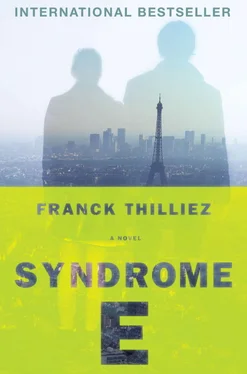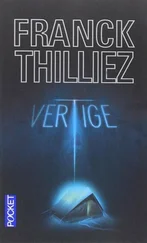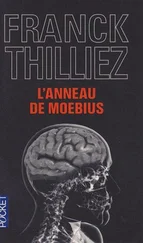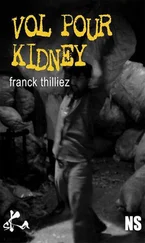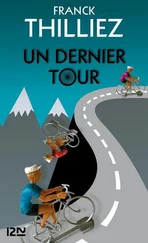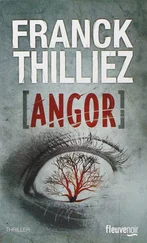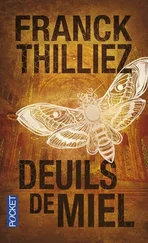“When were they killed?”
“Now that becomes more complicated. Open ground always makes for serious problems with dating. It depends on dampness, depth, pH, and soil composition. The ground was particularly acidic in that spot. Given the condition of these four, I’d say between six months and a year. Impossible to be more precise than that.”
Might as well have said prehistory.
“All killed at the same time?”
“I believe so. The entomologist found just a few domestic fly pupae on each of them, from the first swarm. Which means the bodies were buried a day or two after death. No question they were transported to that place.”
The intact portion of Sharko’s brain was already processing the data. He’d have to attack the missing persons file from another angle, concentrating on date rather than geography. The anthropologist continued his explanation:
“I also believe two different individuals worked on the bodies postmortem. One who sliced off the skulls and another who took care of hands and teeth.”
He handed the inspector a loupe.
“The skulls were sawed with surgical precision. On the face of it, it looks like a Stryker, or something like it, the kind they use in forensics or surgery. The work is professional. You can see for yourself with the loupe—it shows the characteristic striations.”
Sharko took the magnifying device and set it on the table without using it.
“Professional. You mean someone in the field?”
“Someone who’s used to sawing. The starting point, for instance, meets the end point exactly, and I can guarantee you that’s no easy trick on a circular structure. As to profession, it could range from medical examiner to lumberjack.”
“Still, I have a hard time imagining a lumberjack going at his oak trees with a surgical saw. And what about the other potential perp?”
“The teeth were ripped out savagely—there are still bits of root in the recesses. We used tweezers to get them. And for the hands, it looks more like a hatchet. If it had been the same person, he would have been more careful. And he would surely have used his saw.”
Plaisant glanced at his watch and set his cup down next to the coffeemaker, which he switched off.
“Sorry, I’ve got to run. You’ll have everything in—”
“Were the brains removed?”
“Yes. Otherwise we would have found traces of spinal fluid or dura, which is made of very dense collagen fibers that could have withstood a year underground. They also stole the eyes.”
“The eyes?”
“It’s all in the written report. The soil found in the ocular cavities showed no presence of liquid, such as vitreous fluids. For the rest, go see Dr. Busnel on the basement level. I’ve been up all night and I’d like to at least take a shower before my lecture, if you don’t mind.”
The two men parted company in the hallway. Sharko took the stairs, mulling over these revelations. A vague preliminary sketch was taking shape in his head, which led to two divergent paths. On the one hand, the shooting deaths and concealment suggested an execution: the men try to run away or attack; someone shoots them down and makes them disappear very “professionally.” Deep burial, just in itself, is an excellent method, along with fire and acid. On the other hand, there was that business of brains and eyes being removed, which tended to suggest a ritualized, highly controlled undertaking, requiring a cool head and a large dose of sadism. The fact of five cadavers immediately pointed toward a serial killing or mass murder… but with two killers? Something out of the ordinary, in any case. Sharko was keenly aware that he couldn’t afford to leave any stone unturned when it came to the killer’s, or killers’, deep motivations. There existed on this planet individuals who were crazy enough to murder human beings and then devour the contents of their skulls with a spoon.
The inspector arrived at the morgue. At the back, a door with a peephole opened onto a scialytic lamp. In a forensic institute, it was never hard to find the autopsy room: you just had to follow the stench, which was everywhere and nowhere. When Sharko arrived, Dr. Busnel was rinsing the tiled floor with a shower hose. The Paris cop remained at the threshold, waiting until the other finally noticed him and came forward.
“Chief Inspector Sharko, from Paris?”
Sharko held out his hand. A solid exchange of handshakes.
“I see Inspector Péresse circulated the right information.”
“You’ve come after everyone else, and I’ll admit I’m not thrilled at having to repeat the same thing over again. I’ve been at this for two days, I’m exhausted, and there are still reports to—”
Sharko pointed to a fly on the green sheet covering the body.
“There was a fly in my hotel room as well. Yet it’s refrigerated here. Nothing stops them. I can’t stand insects, especially the flying ones.”
Busnel noted his annoyance. He moved toward the table and pulled down the sheet.
“Right. Would you come closer, please, so we can get this done?”
The inspector looked at the water calmly draining into a trench. He moved forward slowly, as if walking on eggshells.
“I’m just being careful of my shoes. They’re made of Cordoba leather and—”
“May we talk about the best-preserved body, if it’s all right with you? I suppose my colleague in anthro already filled you in?”
“He did, yes.”
Busnel was a strapping fellow, about six foot three. With his square jaw and flattened nose, he would have fit in easily on a rugby team. Sharko looked down at the stiff. What greeted his eyes was an indescribable entity, a magma of flesh, earth, bones, and ligaments. So dehumanized that it wasn’t even shocking. In his case, too, they’d sawed off the top of the skull.
The medical examiner indicated the left shoulder.
“Here’s where he was shot. The bullet exited through the back of the deltoid. A priori, this is not the cause of death. I say a priori because, given the degree of decomp, I have no way of defining precisely what did cause his death.”
Busnel now showed the bony portion of the arms, wrists, and torso.
“These areas were skinned.”
“With what instrument?”
The doctor walked to a table and lifted a closed beaker. Sharko squinted.
“Fingernails?”
“Yes. They were stuck in his flesh. Analysis will confirm, but I believe these were his own nails. Thumb, index, and middle finger of the right hand.”
“So the poor bastard clawed at his own skin before dying.”
“Yes. So fiercely and violently that it’s unimaginable. The pain must have been horrendous.”
More and more, the cop had the impression of swimming in murky waters. These discoveries were more complicated than he’d expected.
“And… what about the other bodies?”
“Hard to say, given their condition. I imagine they were also skinned over certain areas, like the shoulders, calves, and back. But not with nails. The marks are clean, regular, and particularly deep. Like the kind made with a knife or cutting tool. Like some moron trying to get rid of a tattoo.”
He pointed again to the fingernails.
“You can force anyone to mutilate himself by shoving a gun against his head. The trick is to find out why.”
“Can I have the photos?”
“They’re attached to the file. It’s not a pretty picture. Trust me.”
“I’ve always trusted MEs.”
The doctor nodded toward a shelf, on which lay a small transparent baggie.
“There’s also this. A tiny piece of green plastic, found under the skin between the clavicle and the neck.”
Sharko approached the shelf.
“Any idea what it’s from?”
“It’s cylindrical, hollow in the middle. It’s certainly a fragment of the sheath from a subcutaneous catheter, like the kind they use in surgery.”
Читать дальше
